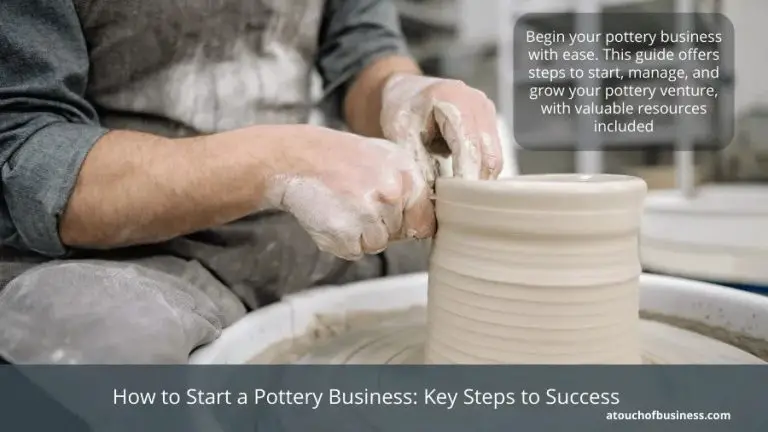How Do You Make An Outdoor Clay Oven?
Outdoor clay ovens have been used for thousands of years to cook delicious wood-fired cuisine. The thick earthen materials used to construct these ovens retain heat exceptionally well, making them perfect for baking artisanal breads, meats, vegetables, and more. Clay oven cooking infuses food with a subtle smoky flavor and inimitable crusty texture.
Building your own backyard clay oven is a rewarding project that allows you to make pizza, bread, and other dishes just like they do in authentic Italian pizzerias and bakeries. Constructing an outdoor oven enables you to cook and entertain outdoors. It also serves as an attractive landscape feature. With some simple materials, time, and effort, you can create your own fully-functional earthen oven for years of enjoyment.
This guide will walk through the end-to-end process of constructing an outdoor clay oven. We’ll cover choosing a location, gathering materials, building the foundation, sculpting the oven dome, installing insulation, and seasoning the oven. With the right planning and preparation, building your own wood-fired clay oven can be an achievable and gratifying backyard project.
Choosing a Location
When choosing a location for your outdoor clay oven, there are a few key factors to consider:
Sun Exposure
You’ll want the oven in a sunny spot that gets at least 6 hours of direct sunlight per day. This allows the oven to fully heat up and maintain high temperatures for baking. Avoid shady areas or locations that will be in shade for much of the day.
Shelter from Wind and Rain
Look for a spot that offers some protection from wind, which can cool the oven, as well as rain, which can damage the oven’s clay structure over time. Under an overhang, eve, or covered patio are ideal sheltered locations.
Safety Clearance
Make sure to leave 2-3 feet of clearance on all sides of the oven to prevent fire hazards. Don’t position it right next to your house or beneath overhanging branches. The chimney will release smoke and heat, so keep that in mind.
Materials Needed
Constructing an outdoor clay oven requires several key materials:
Clay – The type of clay is important for heat retention. Fire clay or pottery clay works best as it can withstand very high temperatures. Regular clay from the ground may crack and break down over time.
Sand – Sand helps bind the clay together and prevents cracking. Builders sand or coarse sand is ideal. Make sure it’s free of organic material.
Straw – Mixing straw into the clay adds strength and insulation. Use straw that is dry and chopped into 1-2 inch pieces.
Bricks – Bricks form the oven floor and chimney. They conduct and retain heat well. Solid red bricks work best, not hollow bricks.
Mortar – A mortar mix of clay, sand, and water binds the bricks together. The mortar must be able to withstand high heat.
Foundation
The foundation is key to ensuring your outdoor oven stands the test of time. Build your oven on level ground with a sturdy base to keep it stable for years to come. Here are some foundation options to consider:
Level Ground
Start by locating a level area of bare earth where you want to build your oven. Use a level tool to ensure the ground has no noticeable slope. This prevents cracking and structural issues down the line. If the ground has a slope, you may need to dig into high spots or build up low spots with compacted fill dirt until flat.
Gravel Base
Pour a 4-6 inch layer of compacted coarse gravel over the leveled ground. Crushed gravel, pea gravel or decomposed granite all work well. Compact the gravel thoroughly before building on top. The gravel base helps prevent shifting and cracking of the foundation.
Concrete Slab
For the most stable and long-lasting base, build your oven on a poured concrete slab. Dig out and frame the area, lay rebar grids for reinforcement, and pour at least a 4 inch thick slab. Let cure fully before building the oven. The concrete prevents settling and keeps the oven protected from ground moisture.
Oven Floor
The oven floor is constructed from a clay mixture that needs to be packed down and sloped. Here are the steps for building the oven floor:
Mix the clay with sand and water until it forms a workable, moldable consistency. Aim for a mix of around 20% clay and 80% sand. Add water gradually and knead the mixture thoroughly until smooth. Too much water will cause cracking when dried.
Pour the clay mixture into the foundation and pack it down firmly using a tamper or your hands. Compact the mixture to around 2-3 inches thick, taking care to eliminate air pockets. This helps retain heat and prevents cracking.
Shape the floor into a gentle slope. Create a raised dome in the center where the oven dome will go. Slope the edges downwards to promote air circulation. Make the slope gradual – around 1 inch drop for every 12 inches outward.
Allow the oven floor to dry completely over several days before building the oven dome. Light misting can help harden and cure the clay.
Oven Dome
The oven dome is one of the most important parts of an outdoor clay oven. It helps retain heat and distribute it evenly for baking. Here are the key steps to building the oven dome:
First, construct a sturdy mold frame out of wood, with an interior diameter matching your foundation. This will form the shape of the dome as you build it. The frame should have an open front and top so you can continue building upwards.
Next, make long clay coils by rolling and squeezing clay between your hands. Lay the coils circumferentially along the base of the mold frame, overlapping each coil with the next by 1/2 inch. Gently press each clay coil into the previous layer to bond them together.
Continue gradually building upwards in a spiral, laying clay coils on top of each other. Let each layer dry partially before adding the next. Shape and smooth the dome as you build using your hands, a trowel, or wet sponge. Create an oven opening near the base, and be sure to slope the top for rain runoff.
Once complete, allow the dome to fully dry and cure before removing the mold frame. Then proceed to insulation and seasoning before firing up your new outdoor oven!
Door
One of the challenging parts of building an outdoor clay oven is constructing the door. The door is what contains and regulates the heat inside the oven.
You’ll need to cut an opening in the front of the oven for the door. This opening should be around 12-14 inches high to allow enough room to get food in and out. Use a cold chisel and hammer to carefully chip away bricks and create the doorway.
For the actual door, build a brick arch using firebricks mortared together. The arch should span the oven entrance. Firebricks are more heat resistant and durable. As you lay the bricks, remove the center one to leave an opening for the door to swing.
Attach metal hinges to the door and oven opening so the door can swing freely open and closed. Use high heat rated hinges that won’t melt or warp from the oven’s heat. Adjust the door so it lays flush against the oven entrance when closed.
Chimney
The chimney is a critical part of your outdoor clay oven. It serves to draw the smoke up and out of the oven during firing and baking. The chimney should be built directly above the oven dome’s smoke escape hole.
To install the chimney:
- Construct the chimney from clay bricks, leaving space between the bricks for airflow.
- Build the chimney tall enough so the smoke can escape properly, usually 4-6 feet.
- Create an interior smoke channel using clay pipe liners. This smoothes the interior surface for better draw.
- Install a chimney cap on top to keep out rain.
Properly installing the chimney will ensure good airflow through your oven for efficient burning and heat control. Taking time on the chimney is well worth the superior baking and cooking performance.
Insulation
Proper insulation is crucial for an efficient outdoor clay oven that can reach and maintain high temperatures. There are a few common lightweight insulation materials used in these ovens:
Vermiculite – This is an expanded mineral that looks like small flakes or pebbles. It’s a very effective insulator, able to withstand high temperatures. Vermiculite helps retain heat and improve cooking performance.
Perlite – This is a volcanic glass that has been expanded with heat treatment. Perlite is another great insulator used in clay ovens. It’s lightweight, reduces temperature transfer, and resist shrinking at high heat.
Sand – Sand is often used as a base insulation layer. It’s heavy and not as efficient as vermiculite or perlite, but provides good stability and support. A few inches of sand can help insulate the floor.
Typically a combination of vermiculite and perlite works best. About 4-6 inches of insulation surrounding the oven dome is ideal. Ensure proper insulation during construction for the best cooking experience.
Seasoning
Seasoning an outdoor clay oven ensures that any moisture in the clay and construction materials evaporates slowly and safely. This makes the oven ready for cooking. Seasoning typically involves two steps – controlled burns and coating the interior.
Controlled burns are low-temperature fires built inside the oven to cure the clay and other materials. Start with a very small fire, just big enough to warm the oven’s interior. Gradually increase the fire size over several burns, while monitoring the oven temperature. Target around 300°F for the first few burns, then slowly work up to a max temperature around 800°F. This helps prevent cracking from too rapid heating or cooling. Keep burn times short, around 30-60 minutes.
After several controlled burns, coat the entire interior dome and floor with olive oil or a food-safe oil alternative. Repeat this oiling and controlled burn process 2-3 times, until the oven interior darkens and develops a natural patina. The oven is now ready for high-temperature cooking.



